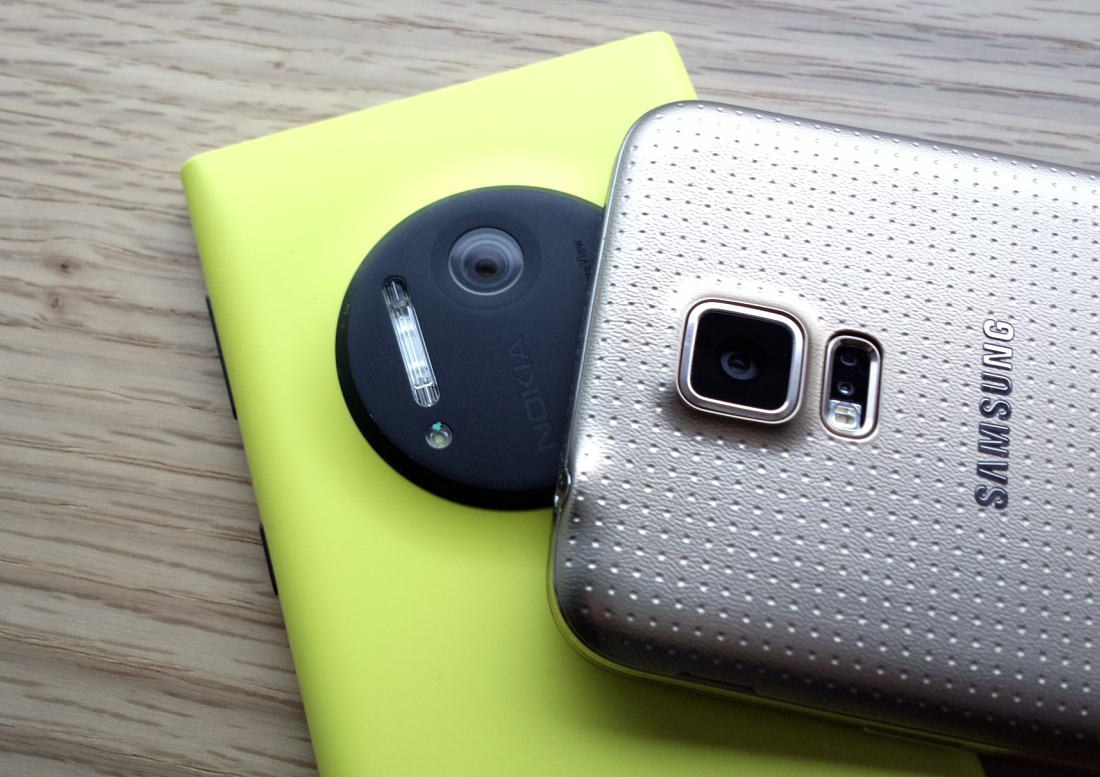
The central question to consider here is also the biggest obstacle to comparison. While the Lumia 1020 takes a high, 38 (or 34) Megapixel image behind the scenes and produces an oversampled 'pure' shareable 5MP version - an approach which does make eminent sense, even though the four second shot to shot time is a bit of a problem sometimes, the Galaxy S5 just goes right out for maximum Megapixels, 16 of them in 16:9 mode (i.e. the sensor is in this aspect ratio).
Which is, evidently, an insane amount of pixel detail to present to the average end user (who, often just wants to post a photo for viewing on a phone or computer screen), but Samsung insists - 16MP it is, at 5MB per image, by default. Of course, you can choose a lower resolution (e.g. 6MP, also in 16:9) and there does seem to be some oversampling and general pixel combination in order to 'purify' the output, but there's no oversampling benefit in doing so. [Text amended after doing more explicit tests for this - pixels are just binned when going down in resolution...]
But all of this variation does present the question of how on earth to compare each device. The Lumia 1020's pros and cons are well known in terms of photo capture, but the S5 is brand new (its firmware was updated OTA only today, in fact) and reviewers around the world are still delivering verdicts.
In fact, there is no one easy way to compare the output from the two camera phones. For the first time ever on the 'All About' sites, my methodology is going to have to stay flexible from test shot to shot, according to what I'm trying to capture and the options available on each phone.
Plus there are the usual caveats over different fields of view, different JPG compression ratios, and so on. All of which means that I'm unable to use the 1:1 interactive comparator on the pages - for which those on low bandwidth connections may be grateful(!)
As usual, I score each test case out of 10, partly for fun, as a rough guide on which device comes out on top from a qualitative point of view.
For an assessment of the Galaxy S5 as an overall smartphone, see my reviews on other sites and shows, of course. Here, I'm just looking at still image capture.
Test 1: Afternoon sunlight, suburban landscape detail
From a comparison point of view, the challenge here is to compare detail, like for like. In other words, looking at what's possible to be captured in the central portion of the frame, in such a way that 1:1 crops from the JPG output can be compared directly. Using the 1020's 34MP output is too high a resolution, using its 5MP output is too low, so I went with using the PureView zoom at around 2x on the scene, producing roughly the same amount of detail per group of pixels. At 2x, there's still some oversampling in the Lumia's software, so hopefully the real world balance between the two devices is maintained. Don't worry, if you disagree with this methodology, I use different approaches in many of the shots below.
Here's the overall scene, UK suburbia. I did take a lovely set of shots at a lakeside, but the 1020 crashed and lost the lot (blame my enthusiasm to play with the 8.1 Preview for Developers, I wasn't on stable firmware!) So houses and cars it is.
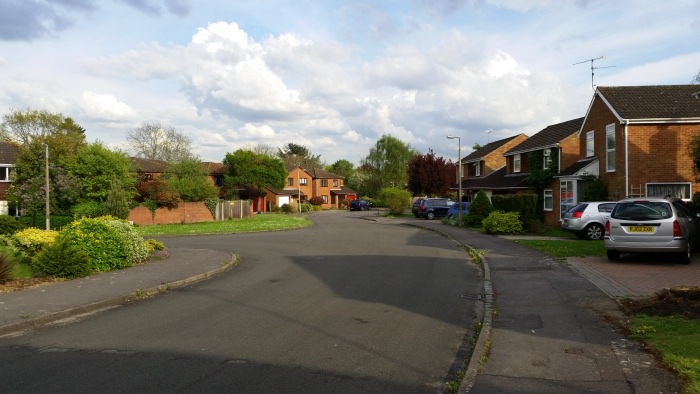
And here are 1:1 crops from the Lumia 1020 (top) and Galaxy S5 (bottom), click the hyperlinks to grab the original JPGs if you're interested:


Image processing is a fascinating science - both phone cameras do a great job here in different ways. The Lumia 1020's detail is indeed 'pure' and natural - and arguably superior - yet the obviously sharpened S5 version has been processed rather expertly. At 1:1 crop levels, as here, the effect is too savage - evidently. But remember that this is part of a 16MP original and that you'd have to blow up the image to poster sizes before you'd see what I'm showing here on the AAWP web page.
Knowing how much to sharpen before you overdo it is a skill - and Samsung do seem to have this down 'pat'. Add in that the 1020's superior result is partly obtained from zooming in and that the S5 is capturing a larger 'scene' in this test, and the scores don't reflect a Nokia win as high as you might expect.
Score: Nokia Lumia 1020: 9 pts, Samsung Galaxy S5: 8 pts
Test 2: Hazy sunlight, medium distance subject
Again, my challenge in this test is to compare detail, like for like. In other words, looking at what's possible to be captured in the central portion of the frame, so I've gone with using the PureView zoom at around 2x, producing roughly the same amount of detail per group of pixels.
Here's the overall scene, of a nearby parked airliner(!)

And here are 1:1 crops from the Lumia 1020 (top) and Galaxy S5 (bottom), click the hyperlinks to grab the original JPGs if you're interested:
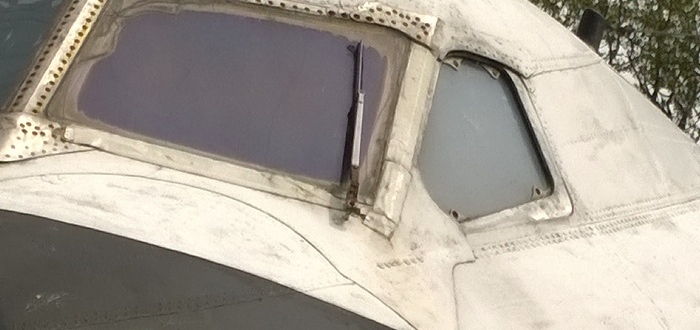
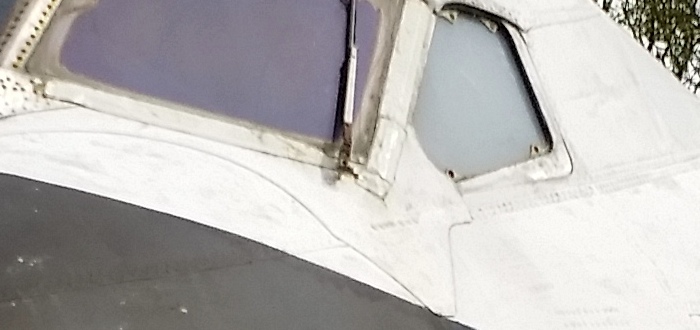
This shot is a clear win for the Lumia 1020, with a far more natural looking crop - it almost looks like you're looking through the web page here AT the plane, while the S5's rendition looks.... artificial. However, do note again that the S5 captures this detail across the whole of the field of view, which has to count for something, while there's also a rather tasty HDR version of this scene, an option which isn't available on the Lumia 1020.
Score: Nokia Lumia 1020: 10 pts, Samsung Galaxy S5: 7 pts
Test 3: Poor light (heavy rain) medium distance subject
Again, my challenge in this test is to compare detail, like for like. In other words, looking at what's possible to be captured in the central portion of the frame, so I've again gone with using the PureView zoom at around 2x, producing roughly the same amount of detail per group of pixels.
Here's the overall scene, shot through torrential rain! [The things I do for AAWP. Oh, ok, it's a fair cop, this was shot through a car window and I was in the dry!] And, yes, the scene to my eyes was a LOT less colourful and MUCH darker than the S5-shot snap here:

And here are 1:1 crops from the Lumia 1020 (top) and Galaxy S5 (bottom), click the hyperlinks to grab the original JPGs if you're interested:


A tough one to call - the 1020's shot has marginally more detail - look at the names above the door - but the S5 shot has less noise and better colours and contrast. Also, a nice touch, in the S5 photo you can even see the streaks as individual rain drops streak through the fraction-of-a-second shot. Atmospheric!
Score: Nokia Lumia 1020: 7 pts, Samsung Galaxy S5: 8 pts
Test 4: Distant detail
If the above three tests were about capturing detail across the central portion (which is why I allowed some PureView zoom), here's a final test with PureView zoom (i.e. using the full sensor resolution on the 1020), this time maxed out, looking at a different plane - in the real world this might also be a pop star on a stage or a wild animal or whatever. Distance was about 50 metres. Here's the full scene:
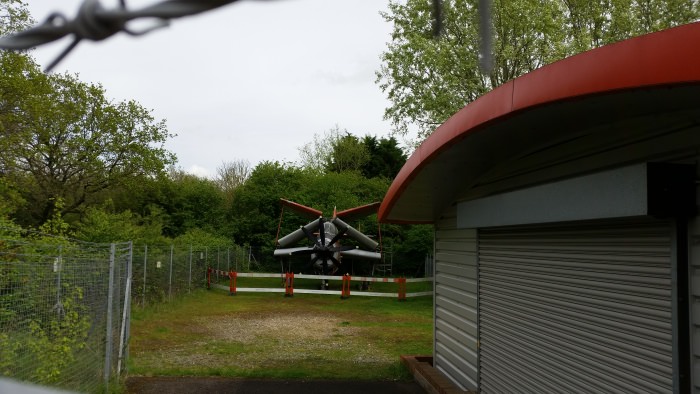
And here are 1:1 crops from the Lumia 1020 (top) and Galaxy S5 (bottom), click the hyperlinks to grab the original JPGs if you're interested:
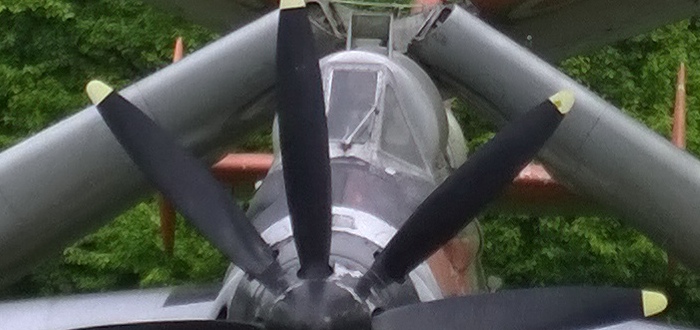
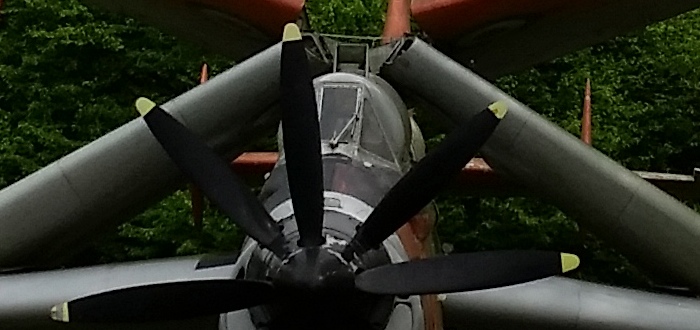
Wow. Samsung's ISOCELL sensor works pretty well. Both phone sensors are at absolute full stretch here, with the 1020 only edging the crop comparison by the narrowest of margins (if at all), courtesy of greater detail, but at the expense of loss of sharpness and contrast (remember that, at full zoom, there's no PureView advantage for the 1020).
Score: Nokia Lumia 1020: 8 pts, Samsung Galaxy S5: 8 pts
Test 5: Macro, bright sunlight
Enough with the zooming and fudging of resolution differences. And enough of the raw pixel peeping, it's time to mix up the methodology. The subject was a bright orange flower, up close (traditionally the Galaxy S series camera's strong suit). And there's no point in pixel peeping here, since it's just as much about exposure, colours and depth of field. This is a macro shot, we're close enough to the subject already!
[One note about the macros on this page: in each case I went as close as I could go before the auto-focus wouldn't lock.]
And here are resampled (for this web page) photos from the Lumia 1020 (top) and Galaxy S5 (bottom), click the hyperlinks to grab the original JPGs if you're interested:
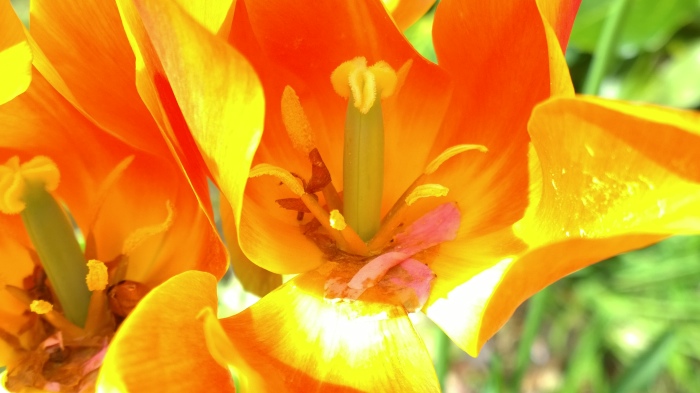
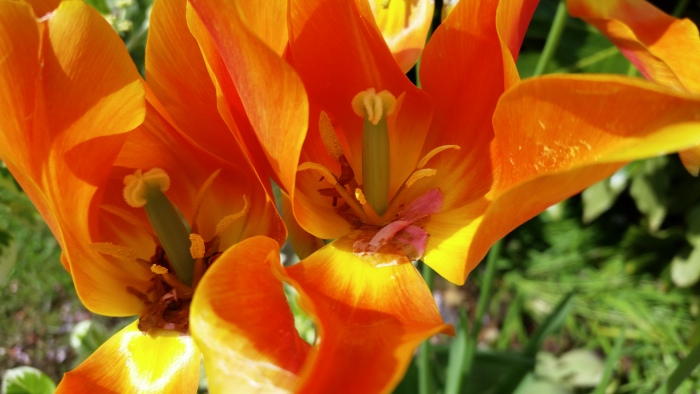
A tough call here. I do like the vividness of the orange colours in the 1020 shot, this was how my eyes saw the flowers, plus the bokeh effect from depth of field is great - but I can't really forgive the blown out sections on the petals, the auto-exposure let the Nokia down here slightly. In contrast the S5's macro shot is perfectly exposed and nicely coloured, and overall just edges a win.
Score: Nokia Lumia 1020: 9 pts, Samsung Galaxy S5: 10 pts
Test 6: Macro, low light (shade)
Using the same 'full photo' methodology as above, but this time some lovely blue flowers deep in the shade beneath a tree. And here are resampled (for this web page) photos from the Lumia 1020 (top) and Galaxy S5 (bottom), click the hyperlinks to grab the original JPGs if you're interested:


Great bokeh effect from each phone camera here, though focussing is hard for each, i.e. which petal exactly to focus on?(!) Colouration is slightly different for each shot, but I'd put the actual colour between the two, so honours even. The S5 shot is a tiny bit over-exposed at the end of the day - these flowers were in deep shade and (as with the orange flower example from the 1020) there's no excuse for an area of blown out detail.
Score: Nokia Lumia 1020: 9 pts, Samsung Galaxy S5: 8 pts
Test 7: Low light landscape
Time to move to really low light, in this case a suburban landscape with plenty of detail. It's also time to adjust the methodology again - we need to see some detail in order to establish levels of noise and stabilisation, but we don't need to go to a full 1:1 crop (or PureView max zoom) because then we'd be looking at too much noise and uncertainty on both.
So I've compromised and taken roughly the same physical framing in both shots and then cropped judiciously (and applied a little resampling to fit the page here).
Here's the overall scene, UK suburbia again, it really was quite dark, much darker than either smartphone camera makes it out to be.

And here are 1:1 crops from the Lumia 1020 (top) and Galaxy S5 (bottom), click the hyperlinks to grab the original JPGs if you're interested:
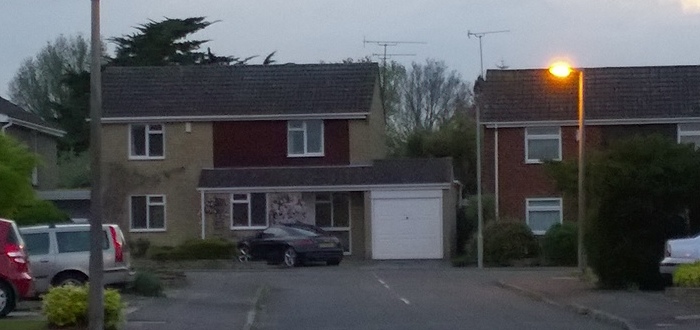
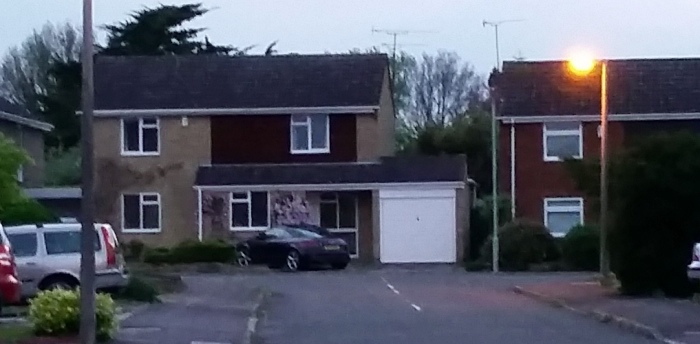
Of the two, the S5 camera makes the scene the lightest - and thus least like reality, plus it has a slight red discolouration and plenty of noise where there should, ideally, be detail. Considering how low the light was, mind you, the S5 camera doesn't do too badly, especially as these shots were handheld.
But wait. Before I score the crops, the S5 doesn't have OIS (as the 1020 does), but it does have a software stabilisation mode - and this does more than you think. In past phones, for stills, this mode tended to just look at accelerometer data and take the shot when your hands were at their most still. On the Galaxy S5, there's now so much processor power available that it advises you to 'try and keep still' and then takes (as far as I can tell) at least a dozen photos behind the scenes, over the span of about a second. Never mind your hands wobbling slightly, the S5 then crunches the dozen photos together (including auto-alignment, obviously) and comes up with one 'perfect' image, free from noise and with maximum detail.
But should this mode be allowed in my testing? After all, it's taking a dozen photos rather than just one. I decided 'yes', since a) I allowed the Lumia to use its PureView software-based oversampling zoom above, b) the 1020 has OIS and its shot to shot time is still longer than the S5's dozen stabilising shots.
Which means that we need two new crops! Here they are from the Lumia 1020 (top) and Galaxy S5 (bottom), click the hyperlinks to grab the original JPGs if you're interested:


Quite a bit better from the S5 - look at the lack of noise and detail (e.g. on the sporty black car). With this 'Picture Stabilisation' mode, the Galaxy S5's low light shots of static subjects are certainly competitive with the 1020's, i.e. in the same league - which is a high compliment.
Score: Nokia Lumia 1020: 9 pts, Samsung Galaxy S5: 8 pts
Test 8: Party time!
Ah yes, my traditional low light moving subject test, mimicking real life, human beings at an indoor event. [And yes, I still haven't taken the top off my beer - I do it now just to tease commenters!]
Here's the overall scene, with just one nearby mood bulb, plus the flash of each phone camera. In each, I was deliberately trying to laugh/dance/make a fool of myself/whatever - as long I was realistically moving gently when the camera flash fired. Just trying to simulate party conditions (seeing as I never get invited to any in real life...!)

And here are crops (again, not strictly 1:1 because we're not looking right down at the pixel level - we simply don't need to) from the Lumia 1020 (top) and Galaxy S5 (bottom), click the hyperlinks to grab the original JPGs if you're interested:


Absolutely no surprises here. Xenon flash for the win here, with much brighter output and shorter duration of illumination. Look at the bottle detailing, for example, in the Lumia 1020 shot. In contrast (and, to be fair, much as with just about any other LED-equipped camera phone) the S5 makes a blurry mess of things.
Interestingly, I noted that the Galaxy S5 is using ISO150 for this shot - I do think Samsung has some optimisation to do here and that using higher ISOs and shorter shutter times might help. We're not expecting another firmware update for several weeks though.
Score: Nokia Lumia 1020: 10 pts, Samsung Galaxy S5: 3 pts
___________
Wrap up time then, with 71 pts to the Nokia Lumia 1020 and 60 points to the Samsung Galaxy S5. An outcome which doesn't actually tell the whole story. For a start, the way the two camera phones handle their resolution is totally different - it may be that users are looking for very high resolution (e.g. 16MP) out of the box, with fast shooting and no compromises, in which case the S5 acquits itself well. While the 1020's strengths are in zooming and reframing into underlying high detail, as needed, keeping quality as high as possible, at a cost of long shot to shot times.
And, if you ignore the last 'party' test, the two phones are only four points apart overall - the Galaxy S5 gets remarkably close to the 'champion' Lumia 1020 across all outdoor tests, a compliment to Samsung's ISOCELL technology and use of a larger sensor than in the S4.
But real people take photos in all conditions, including indoors and in the evening and I just have to include the last test, the area where Nokia's Xenon-equipped Lumia 1020 (and the 808 PureView before it) shines - quite literally. And this one test almost triples the points difference between the two phone cameras.
As ever, then, recommendations will vary according to what you like to shoot photos of. If landscapes and outdoor subjects then Samsung's latest is supremely capable at relatively high megapixel counts. If indoors and in the evening, especially with human subjects then the S5 camera struggles, though as noted above there does seem to be room for Samsung to improve things slightly in firmware.
